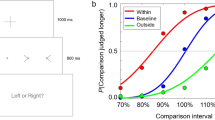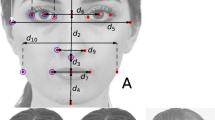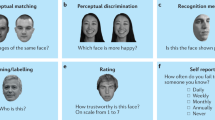Abstract
AT the distance of a few scores of paces the human face appears to be a uniform reddish blur, with no separate features. On a nearer approach specks begin to be seen, corresponding to the eyes and mouth. These gradually increase in distinctness, until at about thirty paces the features become so clear that a hitherto unknown person could thereafter be recognised with some assurance. There is no better opportunity of observing the effects of distance in confounding human faces than by watching soldiers at a review. Their dress is alike, their pose is the same, the light falls upon them from the same direction, and they are often immovable for a considerable time. It is then noticeable how some faces appear indistinguishable at distances where great diversity is apparent in others, and the rudely-defined idea will be justified that the distance at which two faces are just mistakable for one another might serve as a trustworthy basis for the measurement of resemblance. The same may be said of obscurity, of confused refractions, and of turbid media; but in this letter I shall confine myself almost wholly to the effects of distance under the conditions of ample light and a transparent atmosphere. Beyond this I shall say nothing, except in one paragraph almost at the end.
This is a preview of subscription content, access via your institution
Access options
Subscribe to this journal
Receive 51 print issues and online access
$199.00 per year
only $3.90 per issue
Buy this article
- Purchase on Springer Link
- Instant access to full article PDF
Prices may be subject to local taxes which are calculated during checkout
Similar content being viewed by others
Rights and permissions
About this article
Cite this article
GALTON, F. Measurement of Resemblance. Nature 74, 562–563 (1906). https://doi.org/10.1038/074562a0
Issue Date:
DOI: https://doi.org/10.1038/074562a0
Comments
By submitting a comment you agree to abide by our Terms and Community Guidelines. If you find something abusive or that does not comply with our terms or guidelines please flag it as inappropriate.



